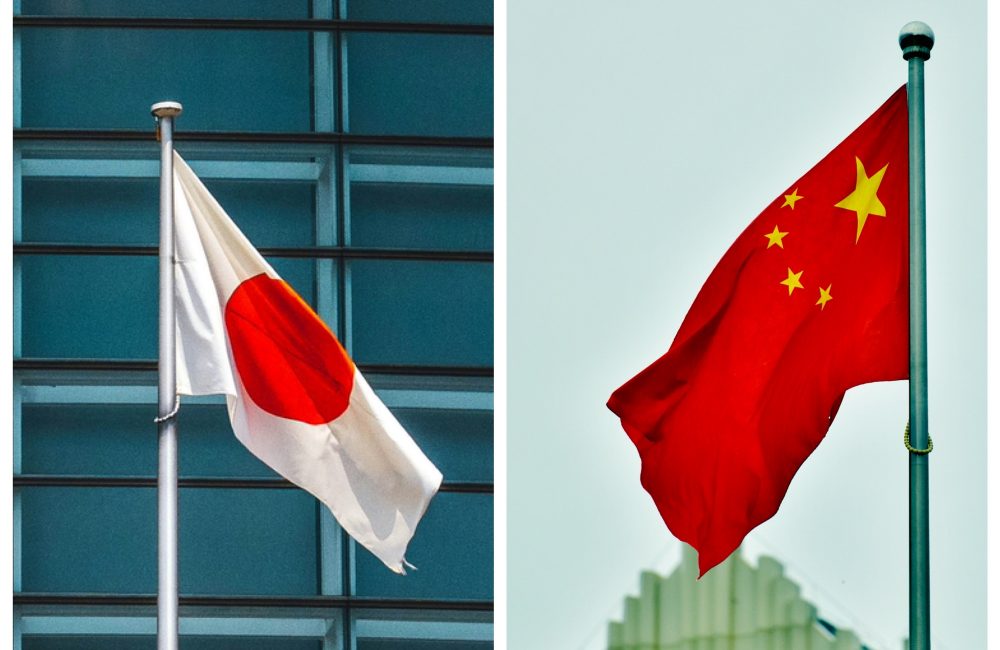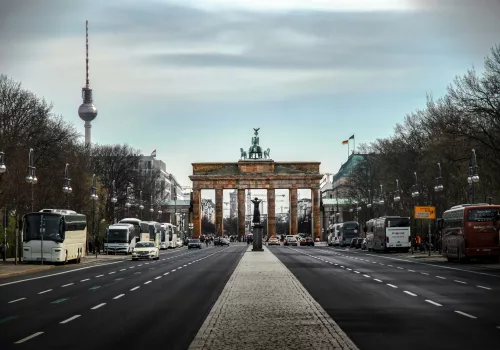The relationship between China and Japan is complex, deeply rooted in centuries of interaction that have included periods of cultural exchange, economic cooperation, and, most notably, conflict. While modern diplomatic and economic relations between the two countries are stable, there remains a strong undercurrent of historical tension that continues to influence public sentiment in both nations. The animosity between China and Japan stems from a combination of historical events, territorial disputes, and nationalist sentiments that have evolved over time.
This article explores the major historical and political factors contributing to the strained relationship between China and Japan, shedding light on why these two powerful Asian nations have such a complicated past.
1. Early Historical Relations and Cultural Exchange
1.1 Cultural and Philosophical Influence
The early relationship between China and Japan was largely characterized by cultural exchange. China, with its long history and advanced civilization, was a major influence on Japan’s development in the fields of politics, philosophy, and religion.
- Introduction of Buddhism and Confucianism: In the 6th century, Japan adopted Buddhism from China via Korea, which profoundly shaped Japanese culture, spirituality, and art. Confucianism, too, spread to Japan, influencing its political structure and ethical systems.
- Tang Dynasty Influence: During the Tang Dynasty (618–907 AD), Japan adopted many aspects of Chinese governance, architecture, and written script. The Chinese writing system (kanji in Japanese) was integrated into the Japanese language, and Chinese legal codes were used as models for Japan’s political structure.
1.2 Japan’s Desire for Independence
While China was a dominant cultural force in the region, Japan gradually sought to establish its own identity and independence. This desire for sovereignty laid the groundwork for future competition and conflict. Japan’s increasing isolationist policies, especially during the Edo period (1603–1868), allowed it to consolidate its own culture and political system, distancing itself from Chinese influence.
2. The First Sino-Japanese War (1894–1895)
2.1 Japan’s Emergence as a Military Power
By the late 19th century, Japan had undergone a significant transformation during the Meiji Restoration (1868), rapidly modernizing its economy and military to become a formidable power in East Asia. This modernization contrasted sharply with the weakened Qing Dynasty in China, which was grappling with internal instability and external pressures from Western powers.
- Korean Peninsula as a Flashpoint: The First Sino-Japanese War was primarily fought over control of Korea, a region historically within China’s sphere of influence. Japan, seeking to expand its influence, challenged China’s dominance over the Korean Peninsula, sparking the conflict.
- Humiliating Defeat for China: Japan’s decisive victory over China in 1895 shocked the world and demonstrated Japan’s growing military prowess. The Treaty of Shimonoseki, which ended the war, forced China to cede Taiwan to Japan and recognize Korea’s independence, further weakening the Qing Dynasty’s influence in East Asia.
2.2 Rising Japanese Nationalism and Chinese Humiliation
Japan’s victory in the First Sino-Japanese War fueled its nationalism and imperial ambitions, while China’s defeat exacerbated its internal decline and sense of national humiliation. This period marked the beginning of an increasingly adversarial relationship, with Japan seeking to expand its empire and China viewing Japan as an emerging threat.
3. Japanese Imperialism and the Second Sino-Japanese War (1937–1945)
3.1 The Invasion of Manchuria
Japan’s imperial ambitions in China intensified in the early 20th century. After World War I, Japan sought to secure more resources and territory, which led to its invasion of Manchuria in 1931. The establishment of the puppet state of Manchukuo in 1932 marked a turning point in Sino-Japanese relations, as China saw Japan’s aggression as a direct threat to its sovereignty.
- Weakness of the Chinese Government: At the time, China was politically fragmented, with the central government under Chiang Kai-shek’s Kuomintang (KMT) struggling to maintain control over warlords and regional factions. Japan took advantage of this instability to expand its influence in China.
3.2 The Nanjing Massacre (1937)
One of the darkest chapters in Sino-Japanese history occurred during the Second Sino-Japanese War (1937–1945), particularly during the infamous Nanjing Massacre, also known as the Rape of Nanjing.
- Atrocities in Nanjing: After capturing the Chinese capital of Nanjing in December 1937, Japanese troops committed widespread atrocities, including mass executions, rapes, and looting. Estimates of the number of civilians and prisoners of war killed range from 100,000 to 300,000. The brutality of the massacre left deep scars on the Chinese psyche and remains a major source of anger and resentment towards Japan.
- Long-Lasting Impact: The Nanjing Massacre is one of the most significant events that continues to affect Chinese attitudes towards Japan. Despite the passage of time, the memory of these atrocities is still very much alive in China, and the issue is regularly brought up in political and diplomatic contexts.
3.3 Japanese Occupation of China
During the Second Sino-Japanese War, Japan occupied large parts of eastern China. The occupation was marked by brutal military campaigns, forced labor, and economic exploitation. Millions of Chinese civilians suffered from starvation, forced relocations, and wartime atrocities, further deepening the animosity between the two nations.
- Japanese Atrocities: In addition to the Nanjing Massacre, Japan’s military committed numerous other war crimes, including the use of chemical and biological weapons, forced prostitution (known as “comfort women”), and the exploitation of Chinese laborers.
- Economic Exploitation: The Japanese occupation severely disrupted China’s economy, contributing to widespread poverty, malnutrition, and suffering. This exploitation left a legacy of resentment that continues to affect relations today.
4. Post-World War II Relations and the Legacy of War
4.1 Japan’s Defeat and the Chinese Civil War
Japan’s defeat in World War II in 1945 did not immediately resolve tensions between China and Japan. While China regained sovereignty over its territory, it soon became engulfed in a civil war between the Kuomintang (KMT) and the Communist Party of China (CPC), led by Mao Zedong. Japan, meanwhile, was occupied by the United States and began a period of post-war reconstruction.
4.2 War Guilt and the Issue of Apology
One of the most enduring sources of tension between China and Japan is the issue of Japan’s war guilt and its perceived lack of a sincere apology for wartime atrocities.
- Japanese War Apologies: While Japanese leaders have issued various apologies for wartime actions, many in China (and other countries affected by Japanese imperialism) view these apologies as insufficient or insincere. The content and tone of these apologies have often been criticized for downplaying or omitting key aspects of Japan’s wartime conduct.
- Japanese Textbook Controversy: Another point of contention is Japan’s treatment of its wartime history in school textbooks. Chinese leaders and citizens have expressed outrage over Japanese history textbooks that they believe whitewash or minimize Japan’s role in World War II atrocities, such as the Nanjing Massacre.
4.3 The Rise of Nationalism in Both Countries
In both China and Japan, nationalism plays a key role in shaping public perceptions of the other country. In China, the Communist Party has used anti-Japanese sentiment to bolster its legitimacy and unite the population around a shared sense of historical grievance. In Japan, there is a rising sense of nationalism, particularly among conservative politicians, who argue that Japan should move beyond its wartime past and take a more assertive role in global affairs.
- Anti-Japanese Sentiment in China: The Chinese government regularly invokes Japan’s wartime atrocities as part of its patriotic education campaign, keeping anti-Japanese sentiment alive in public discourse. Protests against Japan are not uncommon in China, often flaring up in response to perceived provocations, such as visits by Japanese politicians to the controversial Yasukuni Shrine, which honors Japan’s war dead, including war criminals.
- Nationalism in Japan: In Japan, there is a growing movement, particularly among right-wing politicians, to revise the country’s pacifist constitution and adopt a more assertive military posture. Some Japanese nationalists also downplay or deny aspects of Japan’s wartime history, which further inflames tensions with China.
5. Territorial Disputes
5.1 The Senkaku/Diaoyu Islands Dispute
One of the most significant sources of modern-day tension between China and Japan is the territorial dispute over a group of uninhabited islands in the East China Sea, known as the Senkaku Islands in Japan and the Diaoyu Islands in China.
- Strategic Importance: The islands are strategically located near important shipping lanes and are believed to be rich in oil and gas reserves. Both China and Japan claim sovereignty over the islands, and the dispute has led to frequent diplomatic and military standoffs.
- Nationalist Symbolism: For both countries, the Senkaku/Diaoyu Islands have taken on symbolic importance as a matter of national pride and sovereignty. In China, the dispute is often framed as part of the broader narrative of resisting foreign aggression and reclaiming territory lost during the “Century of Humiliation.” In Japan, the islands are viewed as an integral part of national territory that must be defended.
5.2 Military Posturing and Regional Security
Both China and Japan have bolstered their military presence in the East China Sea in response to the territorial dispute. China has increased its naval patrols around the islands, while Japan has expanded its coast guard operations and strengthened its security alliance with the United States.
- Increased Tensions: These actions have led to several close encounters between Chinese and Japanese ships and aircraft, raising fears of a potential military conflict in the region.
- U.S. Involvement: As a close ally of Japan, the United States has reaffirmed its commitment to defending Japanese sovereignty, including the Senkaku/Diaoyu Islands. This adds another layer of complexity to the dispute, as any escalation could potentially involve U.S. military forces.
Conclusion
The deep-rooted tension between China and Japan is the result of centuries of historical conflict, territorial disputes, and unresolved issues from World War II. The atrocities committed during Japan’s imperial expansion, particularly during the Second Sino-Japanese War, remain a significant source of anger in China, while territorial disputes like the Senkaku/Diaoyu Islands continue to fuel nationalist sentiment in both countries.
While economic ties between China and Japan remain strong, these historical grievances and ongoing political tensions ensure that the relationship between the two nations will remain complicated for the foreseeable future. As long as issues like war guilt, territorial disputes, and nationalist rhetoric persist, the animosity between China and Japan will continue to shape their interactions on the world stage.






